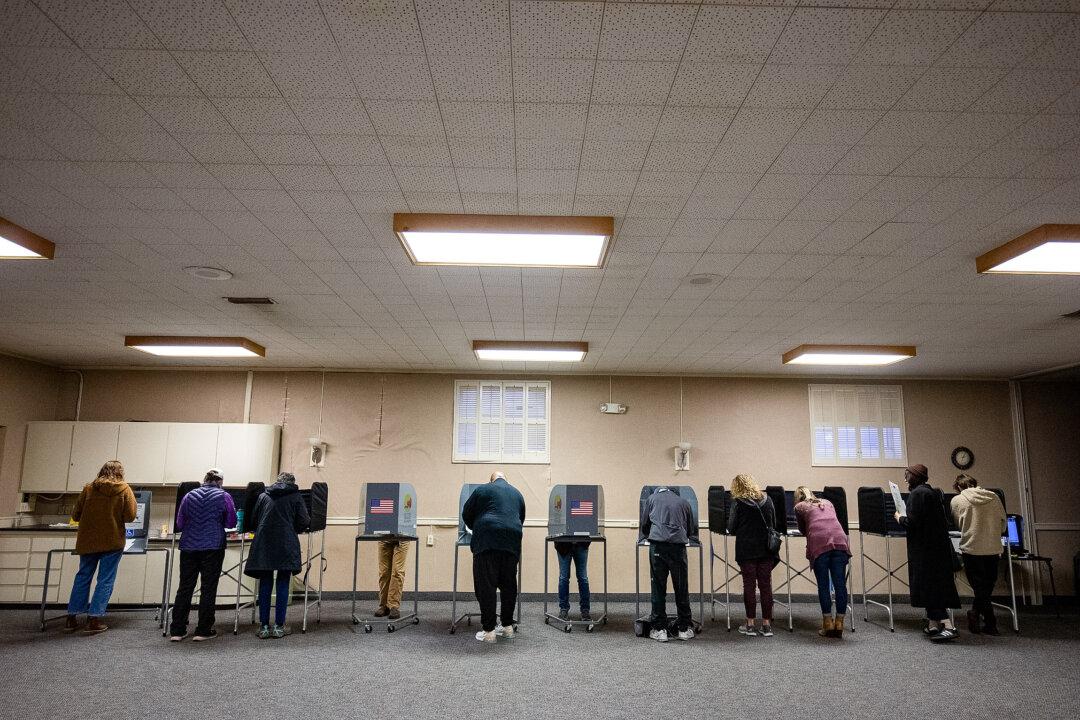As mail disruptions are reported across the United States, the chairman of the U.S Postal Regulatory Commission referred to the mail service as “subpar” and “declining” in testimony on Tuesday. He said it should raise concerns over mail-in ballots for the November election.
“The disappointing service performance should raise concerns now, as elections are scheduled for this Fall and mail ballots could play an important role,” said Michael Kubayanda, chairman of the U.S. Postal Regulatory Commission (PRC), said in testimony before the Senate Homeland Security and Governmental Affairs Committee.
Mr. Kubayanda said the commission recently issued its 2023 Annual Compliance Determination (ACD) for the U.S. Postal Service (USPS) and the findings are “alarming.”
“Based on the numbers reported by USPS, service performance, financial results, mail volume, and efficiency are moving in the wrong direction,” Mr. Kubayanda said.
The ACD found 15 of 27 markets failed to meet its target for on-time service last year.
Mr. Kubayanda said he hopes USPS can “turn around its subpar service performance” and encourages leadership at the agency to be “more collaborative and transparent with customers, Congress, state and local officials, and oversight bodies about the scale of its problems and the appropriate solutions.”
Voters and election officials, for example, must have accurate information regarding the amount of time needed to deliver ballots, he explained.
The USPS' 10-year $40 billion “Delivering for America” plan launched in 2021 is not delivering everywhere in the country as ongoing mail issues have been reported in several states including in Georgia and the Atlanta metro area.
‘You’ve Got Weeks, Not Months to Fix This’
Mr. Ossoff asked Mr. DeJoy when the issues were going to be fixed, and he responded, “You will start seeing service improve, you should see it start now, and I think we’ll get to where we need to be in about 60 days.”Mr. Ossoff indicated that was too long. “The long run is too long. You’ve got weeks, not months to fix this. And if you don’t fix it, 36 percent on-time delivery, I don’t think you’re fit for this job.”
The disruptions in Georgia prompted state lawmakers there to demand answers from Mr. Dejoy, who introduced the plan in 2021.
Sen. Raphael Warnock (D-Ga.) and six other Georgia lawmakers sent a letter to Mr. Dejoy about problems at the new regional processing and distribution center in Palmetto, Georgia, and asked about the “Delivering for America” plan.
“So far, USPS has failed to live up to this standard in Georgia. Since the opening of the new Atlanta Regional Processing and Distribution Center (RPDC) on February 24, 2024, we have increasingly heard from Georgians about disruptions and delays in their essential postal services,” Rev. Warnock and the lawmakers wrote. “As USPS implements changes to its network, USPS must ensure no Georgians, especially those with limited mobility options and urgent needs, are left behind for the sake of modernization.”
Absentee Ballots
A local news report detailed how the mail disruptions in Georgia impacted absentee ballots in which some residents were not able to cast their votes since they did not receive their ballots in time.In some cases, hundreds of thousands of pieces of delayed mail were found. In addition, issues with scanning at postal facilities were discovered, including parcels scanned as delivered despite them never leaving USPS facilities.
The inspector general found issues at four facilities in the Washington area. At the Brookland Station, for instance, they sampled 31 packages and found 45 percent had improper scans or handling. Eleven of the packages were scanned as delivered which should only be performed when a package is left at the customer’s delivery address.
The OIG also reported that on Feb. 6, they found 1,255 delayed mailpieces, which consisted of 1,149 letters, 90 flats, and 16 packages at Brookland Station.
In the Curseen-Morris Processing and Distribution Center in Washington, an inspection found hundreds of thousands of mail that was not properly labeled.
“Specifically, we identified approximately 332,450 mailpieces on February 6, 158,050 mailpieces on February 7, and 168,950 mailpieces on February 8, 2024, of delayed or potentially delayed mail. Some of this mail was not properly labeled so we could not determine how much of it was delayed. We observed this mail on multiple days during our site visit and, based on the placards, some were as old as January 23, 2024, 14 days prior to our site visit,” according to the audit.
In the South Houston Processing Center, the watchdog found “delayed mail awaiting process; delayed mail awaiting dispatch; facility conditions with safety, security and maintenance concerts; and a lack of communications with stakeholders.”
The inspection of that facility found 1,000 containers of delayed mail that still needed to be processed. The audit estimated 160,000 pieces of delayed mail were at the site consisting primarily of packages which included priority mail express, priority mail, ground advantage, and other packages.
Minnesota has been plagued by disruptions for months. The inspector general audit earlier this year found over 20,000 letters and 6,627 flats that were delayed and dated a week earlier than the inspection at the Apple Valley Branch. Three other facilities were also inspected and identified with deficiencies in mail operations.
In North Dakota, there were deficiencies in mail delivery and processing at three locations visited. The watchdog found over 9,000 delayed mailpieces in Bismarck, consisting of 7,463 letters, 1,731 flats, and 96 packages. In addition, management did not report this mail as undelivered in the “Delivery Condition Visualization” system.
Over 67,000 pieces of delayed mail were found by the watchdog at the Dockweiler Station, Downtown Long Beach Station, and Inglewood Carrier Annex in California, according to another audit.
Kansas has also been plagued with issues for months.
In Tuesday’s hearing, U.S. Senator Roger Marshall (R-Kan.) questioned Mr. DeJoy and Inspector General Tammy Hull over the unreliability of the mail service in Kansas City.
“As you may know, the services in the Kansas City Metro Area are of great concern as well. What I understand is maybe a third of the mail is late, taking over three days. I believe that is [in] your report as well. Are you familiar with that report in Kansas City, and what were your conclusions concisely?” Mr. Marshall asked.
Ms. Hall said what they saw in the Kansas/Missouri area, probably seven or eight months ago, was a lot of the problems “related to staffing and an inability to retain staff in the delivery units primarily. And so as a result, some of the routes weren’t being delivered every day, because they just were understaffed in some of those locations.”
USPS Responds
A spokesman for the USPS told The Epoch Times its 10-year Delivering for America “transformation and modernization strategy, once fully implemented, aims to dramatically improve on-time delivery performance through a more efficient, capable, and logical operating model for the postal network. The scale of these improvements is requiring an investment of $40 billion and touches every processing, transportation, delivery, and retail operation and workplace within the Postal Service.”The goal of the USPS, he said, is to “consistently achieve 95% on-time performance for every product category at each of the nation’s 167 million delivery points, and for the roughly 116 billion mail pieces and 7.1 billion packages we deliver every year.”
“We readily acknowledge and regret that there have been service performance issues in several major metropolitan areas in the past six months. The underlying causes of these performance issues – which occurred in Atlanta, Houston, Kansas City and Richmond – have been unique to each metropolitan area,” the spokesman said.
Those issues included a roof collapse, transition to new processing equipment, dissolution of a transportation vendor among several other situations.
As it relates to mail-in ballots, the spokesman said: “The Postal Service is also committed to the secure, timely delivery of the nation’s Election Mail. In 2024, just as we have in previous elections, the Postal Service will fulfill its role in the electoral process when voters choose to utilize us as a part of the election system. We will employ a robust and proven process to ensure proper handling and delivery of all Election Mail, including ballots.”
He noted that in the November 2022 election, 98.96 percent of ballots sent by voters to election officials were delivered within three days; 99.82 percent were delivered within five days; and 99.93 percent were delivered within seven days. Completed ballots from voters to election officials were delivered on average in less than two days, according to the spokesman.







